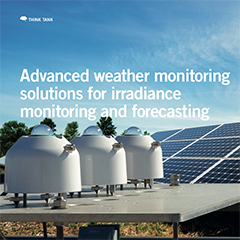The price of photovoltaic (PV) systems continues to decrease, adding PV as a cost effective cleaner energy solution. While solar photovoltaic grid penetration increases worldwide, new technical challenges arises in the electric grid side. Little progress has been made to incorporate managing schemes in solar power systems to improve the utility management.
PV growth, its drivers and implications to the grid
However, many technological solutions have been presented to facilitate the grid side. For example, using bifacial PV modules setup vertically to shift the electric energy generation peaks to match the peak of electricity demand are currently under study and are now becoming attractive due to cost effectiveness of PV.
Developments in electronic house hold appliances now also offer the possibility of connecting a device to the internet and communicate with the grid, realizing the concept of Smart Grids, in which interconnectivity and live data sharing between both the devices producing and consuming electricity allow a better understanding of demand and supply of electricity. Additionally, the storage systems, one of the missing links to the efficient solar power integration, are following the same trend as PV in terms of cost reduction, opening new possibilities for managing the energy sector.
Managing the energy flow from a solar power plant requires an effective solar monitoring system to characterise the available solar energy resource for electricity generation, and this involves a comprehensive set of equipment. By means of providing a diversified set of measurement instruments for all weather monitoring, EKO stands ready to assist the industry and research in solar energy projects.
The international standards for PV system monitoring (IEC 61724-1) define criteria how to perform actual measurements of solar irradiance and meteorological parameters. Having quality measurements aids in developing a dataset that allows the decision makers to effectively optimize their power generation periods. It is common practice quantify the solar energy in terms of global horizontal irradiance (GHI), plane of array (POA), diffuse horizontal irradiance (DHI), and direct normal irradiance (DNI). Depending on the application, acceptable level of uncertainty and cost, different approaches can be pursued to measure each component.




























